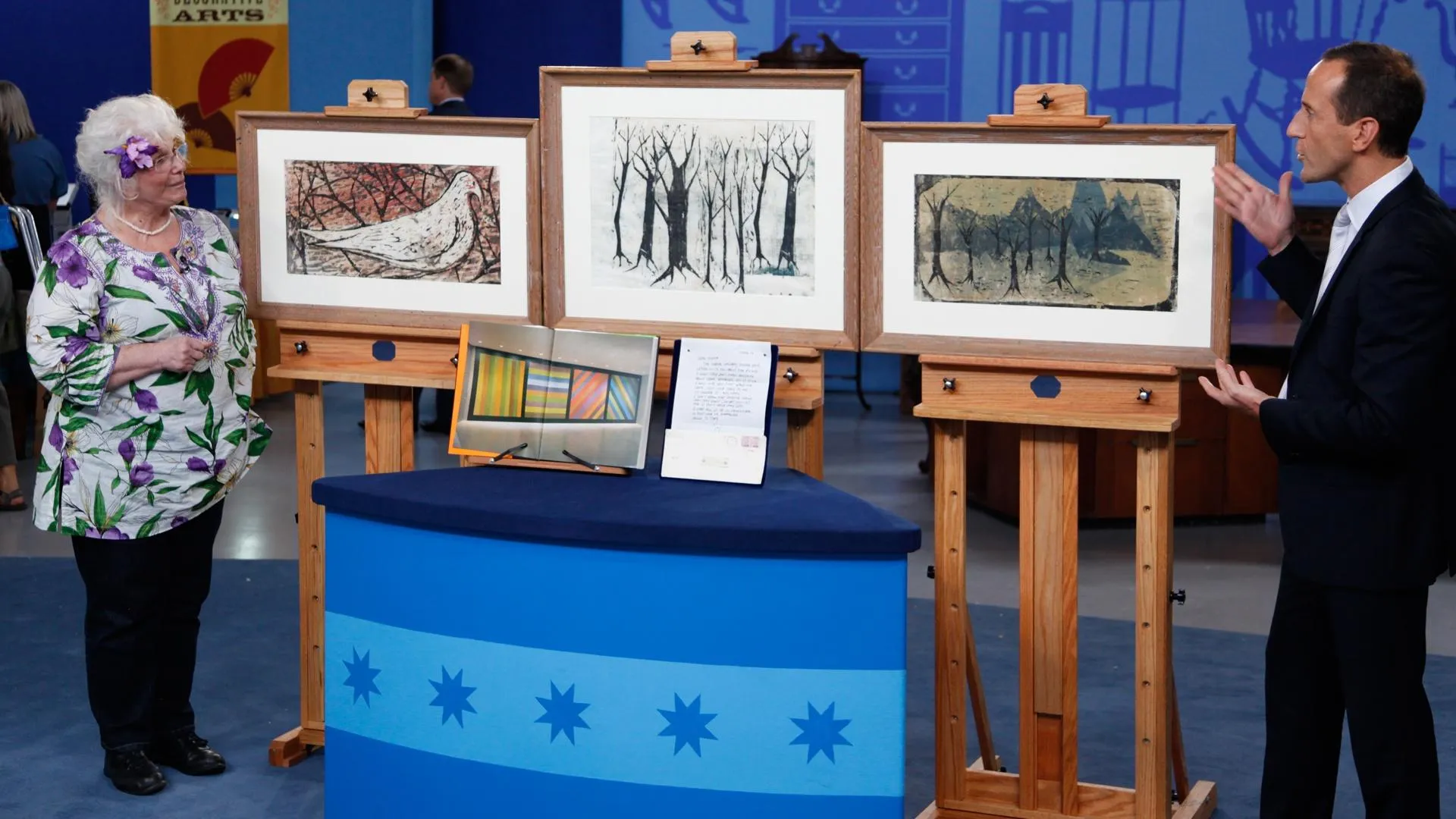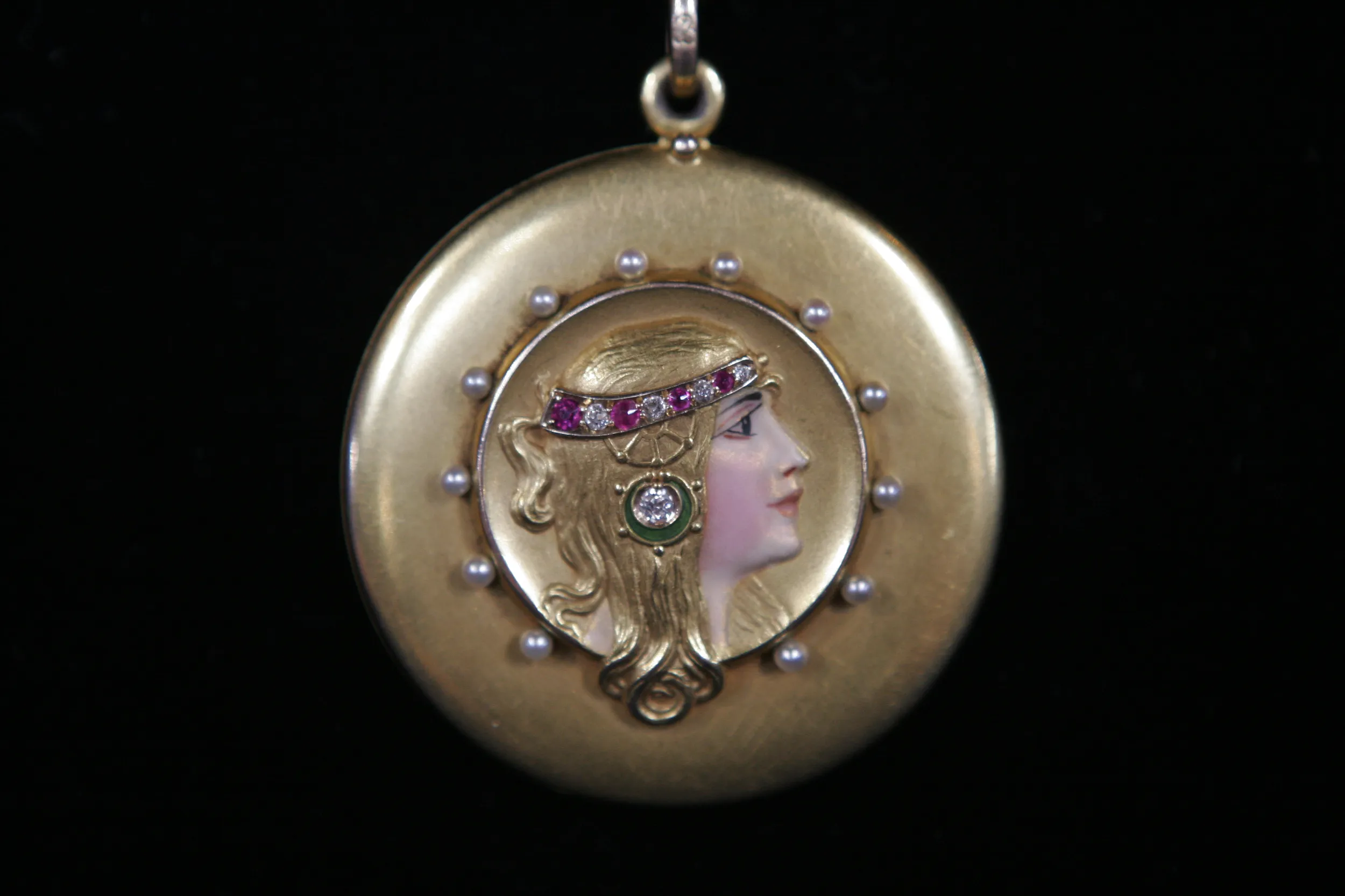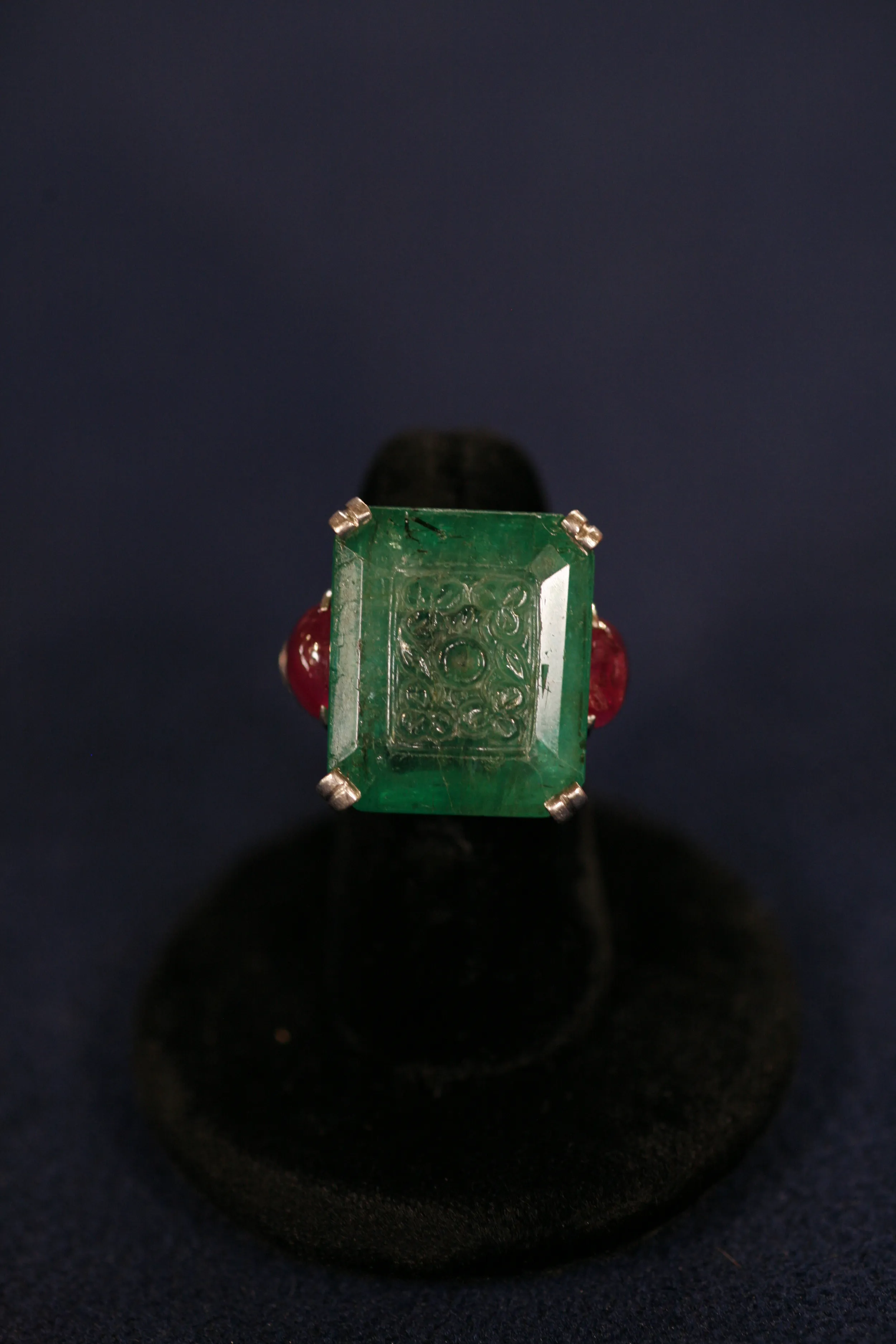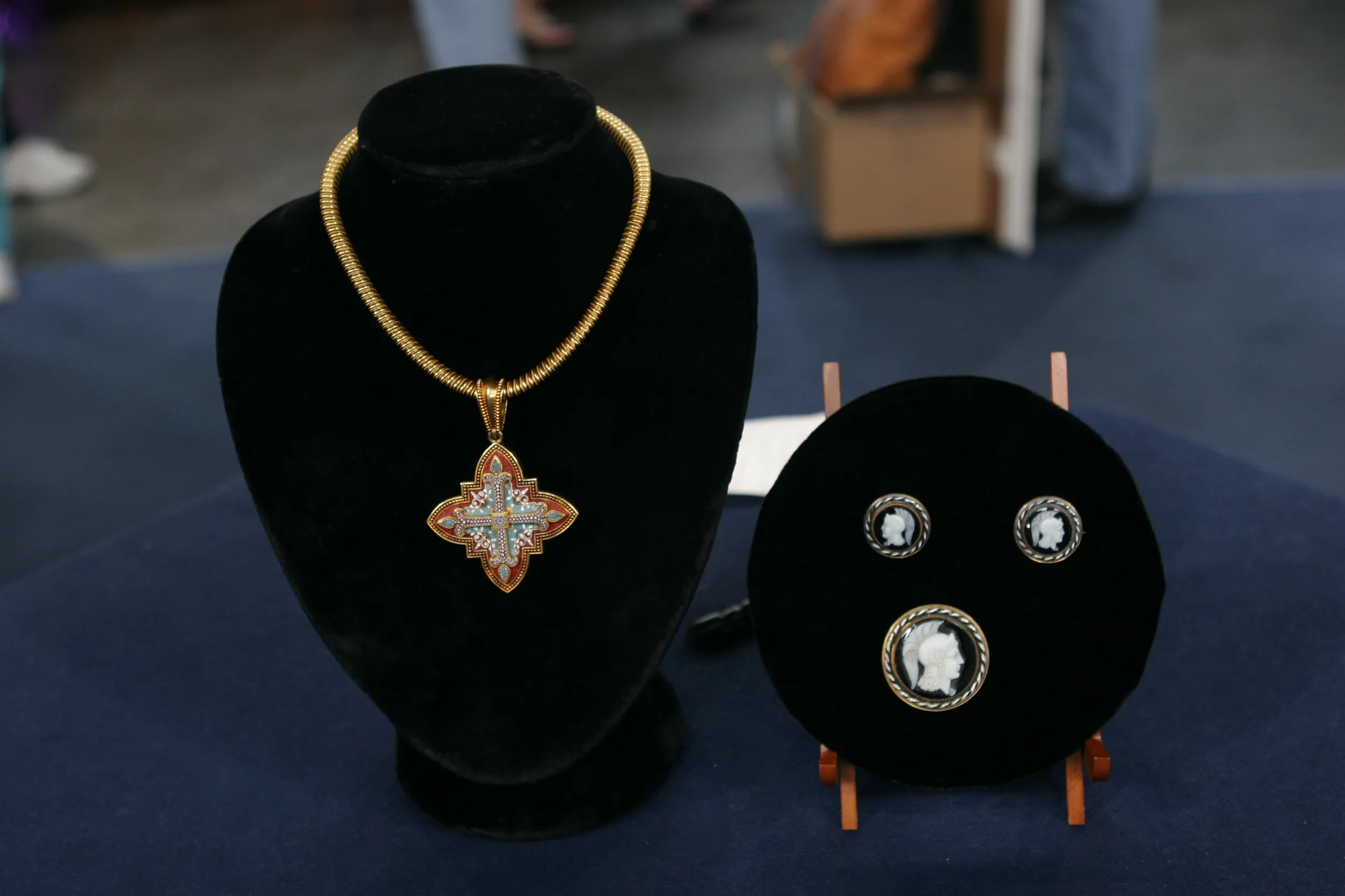GUEST: My son gave me these tickets for Mother's Day this year. Throughout his high school years he would watch the show with me every Monday night. I told him that he needed to spend one hour a week with me. Freshman year he would sit there and roll his eyes, and sophomore year, he'd sit with me patiently. But by his senior year he was actively pricing everything on your show.
APPRAISER: (laughs) That's great. Tell us a little bit about this beautiful necklace that's here.
GUEST: It has been in my family for many, many generations. And I was lucky enough to be the last one to receive it.
APPRAISER: It's just fabulous. It's a Georgian amethyst and gold necklace. Made in England. The Georgian period started 1714 and then it ran through about 1830. This type of work, this wire work, what a lot of people refer to as filigree, is actually cannetille. And it's this gentle scrolling and winding of the thin gold. It's done throughout the whole necklace and the earrings. The amethysts, which are faceted, are most likely Siberian amethyst. And when we look at the piece, you see this grand necklace, and then you see the big drop. Now, there's a little secret that you and I know about this drop.
GUEST: It can be removed.
APPRAISER: Then it becomes a pin.
GUEST: Oh, I didn't even realize that. I didn't know that.
APPRAISER: There's an attachment in the back.
GUEST: Oh, and I love pins.
APPRAISER: Oh, you do? Well, you got a pin too. (laughing) Two for one. Now, there is a little issue over here. This piece on both sides was taken off for some reason. And back in the day, before we had lasers to do very neat and tidy repairs, people used to use lead solder. But it's nothing that can't be reversed, to restore the piece to the way it should be.
GUEST: All right.
APPRAISER: Now, I want to talk about the earrings. This Georgian period was also somewhat of a rebirth of these big drop-dead gorgeous hanging earrings. And what happened here is probably at some time, somebody didn't have pierced ears, and they put a screw back on it. And then what we did for everybody is we got the pieces. Thank God you had them. And we attached one of them with the original back. Now, there's nothing wrong with a screw back, but certainly if you did the screw back, you'd probably want to do it a little neater so you could have the stones up on top.
GUEST: Okay.
APPRAISER: Now, you had an appraisal on this years ago.
GUEST: My grandmother did back in the '40s. In the documentation, I believe it said $1,400.
APPRAISER: Okay. I would say today, that if you sold this at auction, it would be in the neighborhood of $8,000 to $12,000.
GUEST: (laughing) Lovely.
APPRAISER: And that includes a pin also.
GUEST: (laughing) It does.
APPRAISER: (laughing) You get a pin out of the deal.
GUEST: Oh, I'm delighted to know that.








